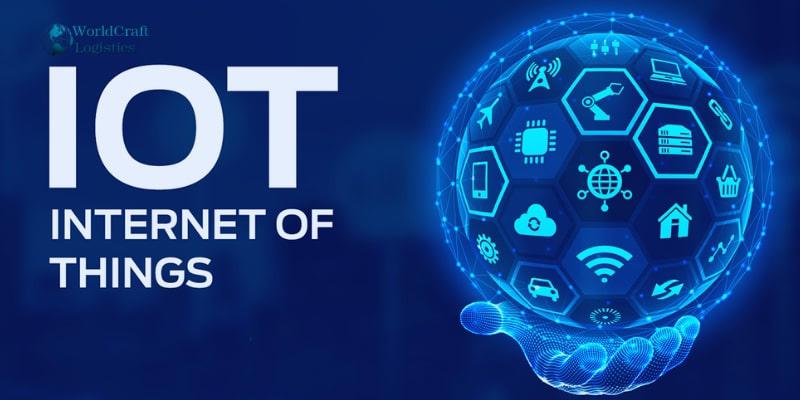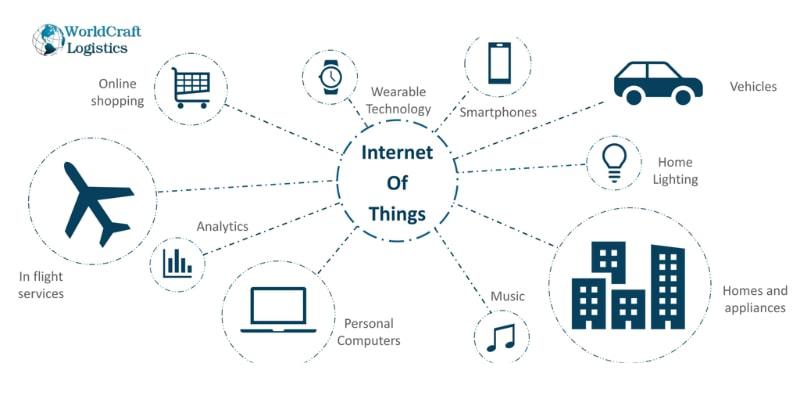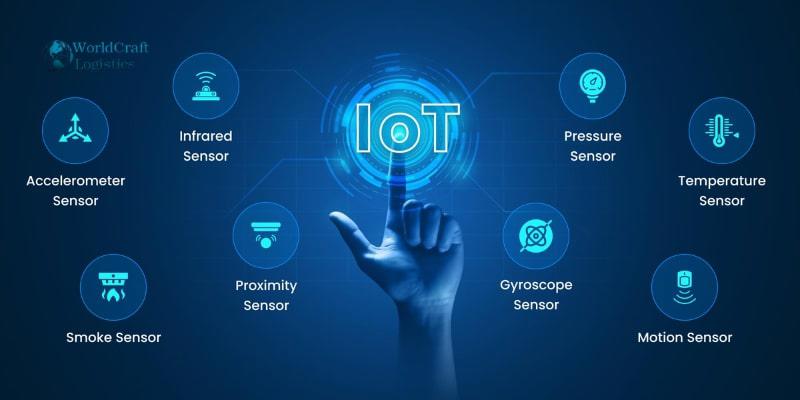
Starting June 1st, 2023 Our warehouse fee will be $0.65/cubic foot per month
In effort to lower the warehouse storage fee during inflation, we have went narrow aisle racking.This construction took us four months but the project is finally completed. With narrow aisle racking, we are able to drop storage by 24%.We as partners will go through this inflation together.
12/18/2023
The supply chain management and logistics operations can be considerably improved with the use of Internet of Things (IoT) solutions, delivering transparency and cost-effectiveness that is only possible with the use of this cutting-edge technology.
Here is function of ioT in SCM for those who are unfamiliar. The collection of real-time data on the goods being stored and carried, inventory level and shipping status, environmental conditions in warehouses and vehicles, etc., is made possible by internet-connected devices (such as image, temperature, humidity sensors, GPS trackers, etc.). After that, the raw data is processed, saved, and analyzed on the cloud to allow for continuous end-to-end supply chain monitoring and quick response to any changes. For instance, if sensors find that the predetermined temperature of cold storage facilities has been exceeded, the control software instructs the actuators to raise the temperature and notifies supply chain managers.

Supply chains are not as robust as one might have thought, as the COVID-19 epidemic and the accompanying worldwide geopolitical events have shown. There is increasing potential for disruptions as commodities go farther and are handled by more people. IoT can assist organizations in controlling such unheard-of situations in such a scenario.
Whether the items are on a ship or inside a big warehouse, IoT devices can help you keep track of their location at all times. The IoT system sends out automatic alerts to correct the issue if you ship the products via the incorrect route.
Environmental factors like humidity, heat, pressure, and cold can harm many products. IoT devices can collect environmental data from a warehouse or a truck and change the conditions automatically.
It can be challenging to locate the proper product in a big warehouse and to continuously monitor its number. IoT in supply chain management promotes worker safety and efficiency. The warehouse can be completely automated with only limited human oversight when IoT and AI are combined.
Managers may anticipate and prepare for contingencies like traffic, weather, potential accidents, or other delays using IoT and data analytics. Using real-time notifications and adaptable contingency plans depending on the movement of commodities, managers may reduce risks.
Equipment failure can have an impact on supply chain efficiency. The machines that handle items along the supply chain can be proactively fixed with the help of IoT sensors used for predictive maintenance, which can set up appointments with specialists.
Logistics managers may benefit from using data from IoT devices to better segment products throughout their life cycles in accordance with their target markets or other segmentation criteria. Managers can develop pertinent strategies by having a deeper understanding of the market.

International companies rapidly recognized the advantages of IoT and began implementing this technology to further enhance their SCM and logistics procedures.
Examples:

The Internet of Things (IoT) is a network of physically connected objects that can send, receive, and exchange data. In most cases, data or Wi-Fi networks are used to connect IoT devices to computer systems.
IoT devices use sensors to measure a variety of environmental variables, such as location, temperature, humidity, light levels, movement, handling, and movement speed. The form factors of IoT devices vary, and they include RFID chips, smart gadgets, and mobile sensors.
Internet of Things devices are a useful tool to track and authenticate goods and shipments using GPS and other technologies in the supply chain. Additionally, they can keep an eye on how things are stored, which improves quality control all throughout the supply chain.

Supply chain management (SCM) has been transformed by IoT devices. Understanding where items are, how they are being held, and when they may be expected at a particular location is considerably simpler.
IoT gadgets might be fastened to certain storage containers, raw materials, or finished goods. The Internet of Things gadget will send its location, which GPS satellites can receive and use to track the movement of products.
Predicting how things will move through the supply chain is made considerably simpler by tracking movement speed and product traffic flow. It is possible for suppliers, producers, and distribution centers to set up for the arrival of goods, which shortens handling times and guarantees that resources are processed quickly.
Food and chemicals are two items that require proper storage conditions. Specialist Internet of Things (IoT) devices can keep an eye on things like temperature, humidity, air exposure, light intensity, and other environmental variables. If specific criteria are crossed, these gadgets may even sound an alert. This greatly facilitates reducing loss and tracking the quality of items along the supply chain.
IoT devices can use goods tracking and route planning to determine where and when deliveries are delayed. This makes it possible to plan for emergencies and take detours to quicken the supply chain.
When products are in a distribution center, IoT devices can still be attached to them. This provides precise identification and management of items while also making it much simpler to locate individual products inside a big warehouse.
SCM can certify the precise arrival time of items thanks to verified tracking through IoT devices. Other administrative actions, such as requests for onward delivery or supplier payments, may result from this.

There are unique difficulties in implementing IoT in supply chain management, but they may be overcome with the right vendor and technology.
It is necessary to train and educate the drivers of vehicles and employees working in warehouses on security precautions and rules for utilizing corporate IoT-based supply chain management platforms.
The abundance of data that IoT systems produce presents both an opportunity and a problem. The amount of server power required to store and process the gathered data must be sufficient. To draw the appropriate conclusions, data governance policies are also necessary.
You need a safe IoT infrastructure before moving to fully connected systems. External assaults and data leaks may be caused by data vulnerabilities. Managers can reduce security risks by integrating machine learning (ML) and cryptographic hardware monitoring.
The availability of the internet and other short-range technologies like Bluetooth and NFC are crucial for IoT platforms and devices. This problem will automatically be resolved as 5G becomes accessible and internet coverage expands.

SEO
Digital Marketing/SEO Specialist
Simon Mang is an SEO and Digital Marketing expert at Wordcraft Logistics. With many years of experience in the field of digital marketing, he has shaped and built strategies to effectively promote Wordcraft Logistics' online presence. With a deep understanding of the logistics industry, I have shared more than 500 specialized articles on many different topics.

Education
01/05/2025

Education
02/18/2025

Education
01/01/2024

Education
08/28/2024

Education
11/13/2023